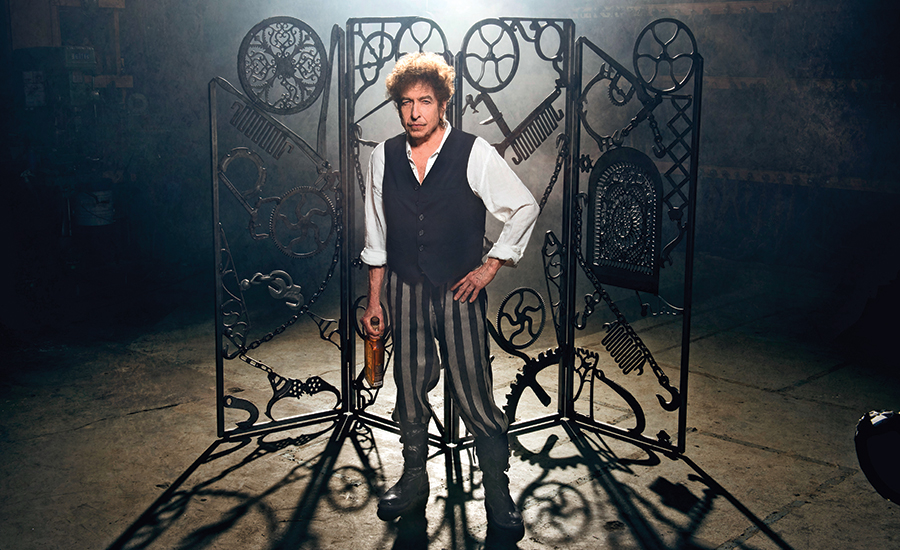Bob Dylan: Writing, Welding and Whiskey
How Heaven’s Door Harnesses the Power of Archetypes












Powerful brands tap into our fundamental needs and desires by embodying archetypes.
What exactly is an archetype, and how does Heaven’s Door Whiskey use its influence to win over even the most cynical connoisseur?
Archetypes are universally recognized character traits based on psychologist Carl Jung’s theory that humans use symbolism to understand concepts. Psychology-driven brand strategist Kaye Putnam explains, “As humans, we want to connect with people—not products or services. So, when a brand takes on a primary character archetype, people recognize it—they get it.” Ultimately, archetypes bring consumers closer to the company and its product.
Take Apple—a company that thrives on a natural inclination to change current realities. By communicating visions of “what could be,” it taps into the Innovator archetype. Steve Wozniak has even said that he and Steve Jobs bonded over their Bob Dylan fandom. “We’d buy brochures of Dylan lyrics and stay up late interpreting them. Dylan’s words struck chords of creative thinking.”
Long before co-creating Heaven’s Door Whiskey, Bob Dylan has had a proclivity for manifesting archetypical traits noting, “I felt right at home in this mythical realm made up not with individuals so much as archetypes.”—Bob Dylan, Chronicles Vol. I
“Dylan has these qualities that actually work well for a whiskey,” says Marc Bushala, CEO of Spirits Investment Partners which creates and invests in spirits businesses, including Heaven’s Door. Bushala understands how the right personality characteristics can enhance a brand. “He has great authenticity. He is a quintessential American. He does things the way he wants to do them. I think these are good attributes for a super-premium whiskey as well.”
WRITING
the storyteller archetype
The initial rollout for Heaven’s Door included a straight rye, straight bourbon and a double-barreled whiskey. In a statement to The New York Times, Dylan expressed his intentions behind the project: “We both wanted to create a collection of American whiskeys that, in their own way, tell a story. I’ve been traveling for decades, and I’ve been able to try some of the best spirits that the world of whiskey has to offer.”
The ultimate Storyteller, Dylan fulfills that archetype by connecting people to the shared human experience with stories that unleash powerful emotions, build credibility and allow for difficult topics to be explored. The Storyteller passes along history and insight, often with a bit of exaggeration or drama to make a point or add clarity.*
WELDING
the creator archetype
“I’ve been around iron all my life, ever since I was a kid. I was born and raised in iron ore country—where you could breathe it and smell it every day. And I’ve always worked with it in one form or another,” Dylan explained when announcing Heaven’s Door Whiskey this spring. “Gates appeal to me because of the negative space they allow. They can be closed but at the same time they allow the seasons and breezes to enter and flow. They can shut you out or shut you in. And in some ways there is no difference.”
Ryan Perry, head of whiskey development and innovation for Heaven’s Door, explained the process of capturing the outsider art aspect of Dylan’s large-scale gates for the bottle label. “Heaven’s Door showcases Bob’s artistry and creative genius in forms other than his famous music and lyricism. Bob Dylan is much more than a musician, as portrayed by his hand-forged gates on our whiskey expressions. These gates embody highly detailed collected artifacts from across the country, so we had to ensure their beauty was properly translated onto our physical bottle. We used high-definition renderings of Bob’s gates to transition them into a digital art file for laser decoration on the front of bottle.”
Tasked with making a manufacturable bottle, Scott Jost, vice president of innovation and design at Studio One Eleven, a division of Berlin Packaging, and his team worked with Heaven’s Door to, “translate Dylan’s unadulterated vision to the shelf—something that other glass molders deemed too difficult to execute.” The process took weeks, but the end result was worth it. “The bottle serves as the perfect vessel for the line of whiskeys that has well-defined personalities and robust flavor profiles. The custom rounded-shoulder bottle shape features Dylan’s distinctive iron gates that he created in his studio, Black Buffalo Ironworks, from objects found on farms and scrapyards across America. With a custom ‘HD’ embossed bar top closure, the total package translates to a premium spirit with an artistic soul.”
The Creator brand and archetype is focused on expressing, not impressing. Brooke Lawson, brand strategist and founder of Filament Branding, uses archetypes to help develop brands. She says, “The Creator is all about creating something meaningful and of lasting value. They focus on the process and the craftsmanship behind everything they do and the Heaven’s Door brand hits that nail right on the head.”
WHISKEY
the wizard archetype
Margaret Hartwell, co-author of Archetypes in Branding: A Toolkit for Creatives and Strategists, thinks Heaven’s Door Whiskey embodies The Wizard, an archetype that shares characteristics with The Alchemist/Magician, The Warrior and The Provocateur, but is still unique.
“With the packaging based on Dylan’s own ironwork sculptures, it’s no wonder it’s full of symbolism. Dylan’s fierce independence and storytelling are alive in his artwork. When combined with the custom molded bottle, the feeling that gets activated is that the separate elements have been transmuted into something very special. And, of course, the name, taken from the penetrating song, Knockin’ on Heaven’s Door, triggers the internal knowing that there is something beyond this physical world. Because The Wizard learns his or her craft during long hours of diligent study, practice and meditation, this archetype seems to see with what I would call ‘wisdom vision’ and can inspire a sense of mystery, intrigue and awe—aspects of our existential reality that we can’t explain.”
Hartwell further explains how The Wizard offers an aspect of the Magician that is perhaps less about fantasy and the illusion of magic, and more about the mystical. The Wizard also carries aspects of the Provocateur—activation and insight—as well as aspects of the Warrior—dedication and fortitude.
Living the Brand
Heaven’s Door Whiskey announced the opening of a distillery and brand arts center in 2019 to offer consumers a tangible experience that goes beyond the tumbler.
Housed in a 140-year-old church in the SoBro neighborhood of downtown Nashville, the craft distillery and Heaven’s Door Arts Center will be what Perry calls a “physical manifestation of the brand ethos—an intersection of art and craft that will serve as a distinguishing element of the overall brand positioning through a unique and immersive consumer experience.” The venue will also serve as a home to a selection of Dylan’s artwork, photographs and memorabilia, and it will host curated exhibitions of other artists and musicians. Sounds like the closest thing to heaven a whiskey-drinking Dylan fan can get.
Looking for a reprint of this article?
From high-res PDFs to custom plaques, order your copy today!












